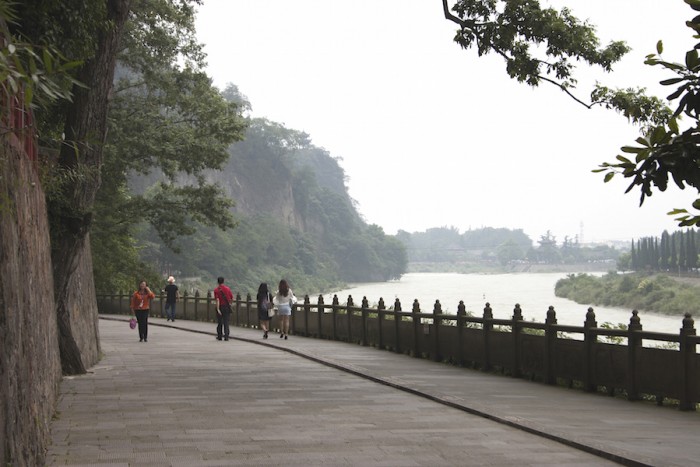
As concerns about earthquake and drought preparation rise in Seattle, China’s Eastern Coast, Taiwan and Japan’s Ryuku Islands face a super typhoon reaching speeds of at least 150 miles per hour.
In the Southeastern coastal province of Fujian, frequent flooding disaster wasn’t always the case.
“We used to think these floods were wǔshí nián yī yù (五十年一遇), meaning something that happens once every 50 years,” said Shuxuan Zhou, a native of Fujian Province who is pursuing a doctorate in gender studies at the University of Washington (UW).
Zhou is referring to a golden era before June 22, 1998, when a major Min River flood nearly submerged her home city of Xiamen, a Southwestern coastal metropolis facing the Taiwan Strait. Zhou, then 12, remembers waking to crashing sounds of torrential rain pour that day. Atop her five-story apartment building, she watched the flood take its toll.
“In the truck factory nearby, all of the trucks were mostly covered by the water,” she recalled. “Only the top of the trucks were above the flood.”
After this 1998 disaster, which displaced communities around her, “the flood happened almost every year, big or small,” Zhou said. Seventeen years later, China’s Fujian Province sees many more floods and several typhoons a year, just surviving one last month. It stands to face at least five more before the end of 2015, including the quickly approaching Super Typhoon Soudelor. The consequences of climate change seem insurmountable, but can findings from Washington state help mitigate this pattern of flooding along Southeastern China riverbeds?
This June, Bob Carey, director of strategic partnerships of Washington-based The Nature Conservancy (TNC), visited the floodplains along Minjiang River to see for himself. TNC works to preserve and restore coastal wetlands as a major flood prevention tool.
A leader of the Floodplains By Design project where environmentalists work closely with state and local institutions, Carey has been involved in widening the Puyallup River bed along with reconstructing and strengthening levees in areas most vulnerable to flooding.
“We practice community-based conservation where everyone can be more successful if we work together on shared interests,” said Carey of the project.
This work has allowed the Puyallup River to contain more rain and allow the natural landscape to soak in the rainwater, therefore reducing the risk of flooding in the city of Orting. In January 2009, Orting was the site of the largest urban evacuation in Washington state history when 26,000 flood victims had to be relocated. The prevention project saw the fruits of its labor in November 2014: the city of Orting remained dry when hit by a similar rainstorm.
This past June, Carey attended the inaugural China Coastal Wetland Conservation Network (CWCN) conference in Changle inside China’s coastal Fujian Province as a guest speaker, sharing lessons learned from work in Orting and along the Puyallup River.
By bringing together governmental agencies, research institutes, bird watching societies and other enterprises of the 11 provinces that make up China’s eastern coast, the CWCN aims to tackle the issues of wetland restoration — a critical tool in flood prevention and mitigation.
“Our two countries are probably more responsible for driving [the health of coastal communities] and determining whether a global mitigation solution is viable than any others.”
The network consists of 100 forestry scientists and staff who work for the state-sector administrative departments from all over China, with three from the U.S. attending the meeting. In the network’s brochure, the group acknowledges that China’s unique challenges lie in the fact that the Eastern Coastal Region is home to 11 provinces and 40 percent of the country’s nearly 1.4 billion population. This feeds rapid industrialization, threatening the viability of coastal wetlands, with heavy water pollution, reclamation of soil and unsustainable fisheries resulting in a 22 percent reduction of wetlands along China’s East Coast over the past 10 years. In contrast, the average rate of national wetland loss is 8.8 percent per decade, according to the brochure.
Reflecting on his trip to the Minjiang River delta, Carey noted challenges that Fujian and Washington both face. Like Fujian Province, Washington state’s landscape feature characteristic shallow bodies of water such as marshes and floodplains, collectively known as coastal wetlands. These are essential in creating rich fertile soil for agriculture and flood prevention — as well as habitats for migratory birds on the great Pacific Flyway and East Asian-Australasian flyway.
Much of the wetland conservation for wildlife Carey saw along the Minjiang estuary were fish ponds for farming isolated from other parts of the natural river ecosystem.
“In other words, [the current form of restoration takes place] at the expense of wetland ecosystems,” Carey wrote in a clarifying email. “From what I learned, there are few wild fisheries that take advantage of native species and habitats.”
Weighing the strengths and weaknesses of fish ponds, Carey stated that while fish ponds may produce more food, they also come at the expense of losing wetlands essential for cleansing water, sequestering carbon and providing a hedge against flooding and climate change.
“There is no easy solution,” he said.
Despite China’s institutional barriers, Carey is hopeful for future collaboration with the nation.
“Climate change will affect the health of coastal communities and ecosystems dramatically in both the U.S. and China,” said Carey. “Our two countries are probably more responsible for driving it and determining whether a global mitigation solution is viable than any others.”
Shuxuan Zhou contributed to this report.

